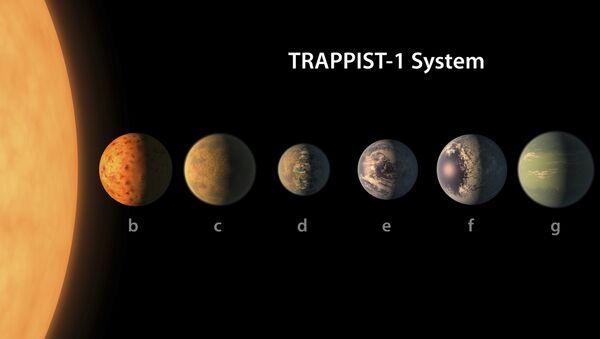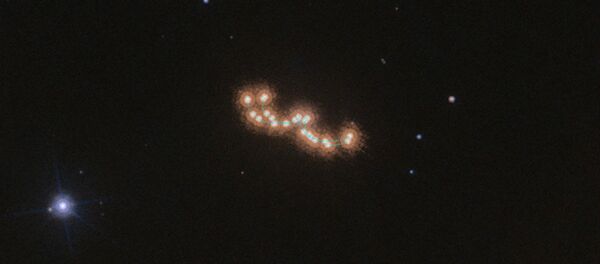The exception is TRAPPIST-1f, which has a mass of 25 percent water, signifying that TRAPPIST-1e may be the best candidate for future habitability studies.
In May last year, astronomers from MIT announced the discovery of an extremely unusual star system in the nearest region of Earth — TRAPPIST-1, which is only 40 light-years away from Earth in the direction of the constellation of Aquarius.
It was reported then that three planets revolving around this red dwarf, which presumably have a mass comparable to that of earth, are inside the so-called "zone of life" where water can exist in liquid form.
The scientists studied the spectrum of TRAPPIST-1 star beams, trying to understand the composition of the atmosphere of its planets, when they unexpectedly discovered that there were actually not three, but seven planets, six of them within the zone of life.
However, after further investigations it was discovered that one planet, TRAPPIST-1f, located in the center of the zone of life and considered one of the main candidates for the role of a twin of earth, is actually a "planet-ocean.”
Around 20-25 percent of its mass is water; this water, due to its proximity to the star, will be heated to very high temperatures and will cover the planet with a dense cloud of vapor, which will make the existence of life impossible on it.
All the other six planets are more similar to Earth – the proportion of water in their mass should not exceed several percent, and their insides should be composed of rocks similar in composition and density to terrestrial minerals.
The most suitable for life, therefore, is not TRAPPIST-1f, but its smaller neighbor TRAPPIST-1e, located slightly closer to the star.
In addition, life can also exist on the planet TRAPPIST-1g, which makes one revolution around the star in 13 incomplete days. The scientists plan to focus their efforts on these two planets in the future and they hope to obtain more accurate data on the composition and suitability of these planets for life.






